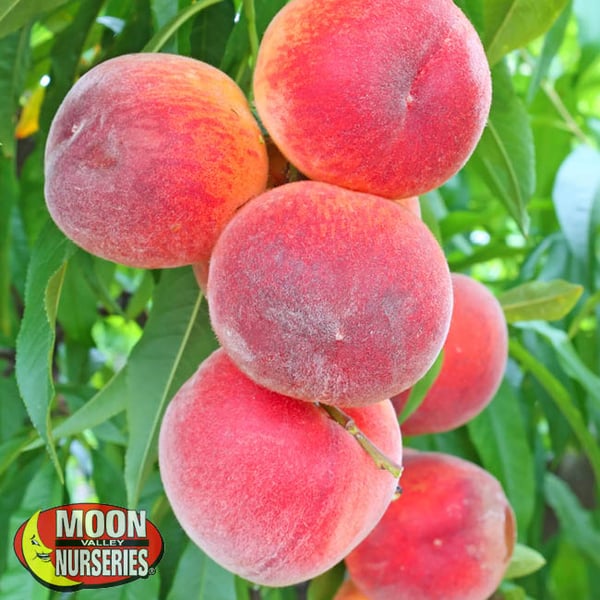Sal Bracale
Growing Stone Fruit Trees

A really common question we get with customers is how to grow fruit trees in our desert region. When we say fruit trees, we mean stone fruits such as peaches, plums, nectarines, and more. Our customers are always shocked when they learn how many fruit trees grow well in the arid desert climates.
We carry a large amount of fruit trees that only need low chill hours in the winter to produce a plentiful harvest. Typically, the chill hours are how much time the tree needs in cold temperatures so trees with low chill hours do best in Arizona. On average, Arizona gets less than 300 chill hours, so we only carry fruit tree varieties in that range. It is best to plant trees with the lowest chill hours in case of warm winters.
Harvesting and Protecting Stone Fruit Trees
 Another question that comes up often is, “how do you even harvest fruit trees?”. We recommend two ways of harvesting the fruit from your trees. These are also helpful ways to protect your harvest from the birds in our region. There are not many fruit trees in the Southwest, and the birds are not as heavily attracted to citrus trees, so they tend to target other fruit trees instead.
Another question that comes up often is, “how do you even harvest fruit trees?”. We recommend two ways of harvesting the fruit from your trees. These are also helpful ways to protect your harvest from the birds in our region. There are not many fruit trees in the Southwest, and the birds are not as heavily attracted to citrus trees, so they tend to target other fruit trees instead.
The first recommendation is pulling the fruit off your trees as soon as you think it is close to being ripe. You can let them finish ripening in your home, whether you place them in the refrigerator or leave them on the counter in a brown paper bag (old-school tricks). You might notice that grocery stores do this often.
A second option for protecting your fruit from being eaten by birds is to cover the canopy of your trees with bird netting. The netting will keep the birds from invading the trees and ruining the fruit before you can harvest it all. This will save a lot more of your fruit than without the protection from the net.
Fertilizing Stone Fruit Trees
To keep your fruit trees in optimal health to grow to their full potential in our climate, you need to do two things.
- Buy your trees from Moon Valley Nurseries
All fruit trees at Moon Valley Nurseries are custom-grown for the Arizona weather and required low chill hours for our area. When you purchase any of our fruit trees, you are getting the most durable, acclimated, and healthy tree from day one.
- Fertilize your trees with custom-blended products

Super Charged Moon Juice helps stimulate growth which allows the tree to increase its moisture and fertilizer intake. It also supplies the tree with a boost of the three most important nutrients for trees - Iron, Magnesium, and Zinc.
Moon Valley Nurseries custom-made, organic Moon Dust is an all-purpose tree and plant fertilizer. It carries the perfect ratio of Nitrogen, Phosphorus, and Potassium for more abundant and tastier crops.
Stone Fruit Tree Trunk Wrapping
For younger fruit trees, it is vital to cover the tree trunk from getting sun damage. Once the tree grows larger and the canopy provides shade to the trunk, you no longer need to worry about sunburn. Until then, the most popular options to protect your tree trunk is to paint it with a product made specifically for plant material or to use a tree wrapping material. One of our favorite options is the white tree wrap that stretches and grows with the tree.
Watering your Stone Fruit Trees
Last, but definitely not least, watering your tree is going to be the most vital component of taking care of your tree and producing the best fruit! Especially during the hotter months, you want to check your tree for signs of underwatering and supplement accordingly. Deep watering is also going to help fruit trees grow sweeter, juicier fruit.
Talk to a Nursery Professional Today!
If you have more questions about stone fruit trees, visit us at the location nearest to you and our nursery pros will provide you with all the information you need.
Ready to get started on designing your yard and growing your own food? Schedule a consultation today.
Submit a Comment